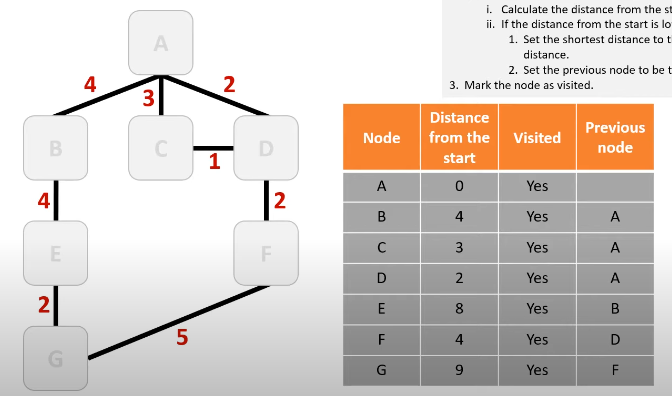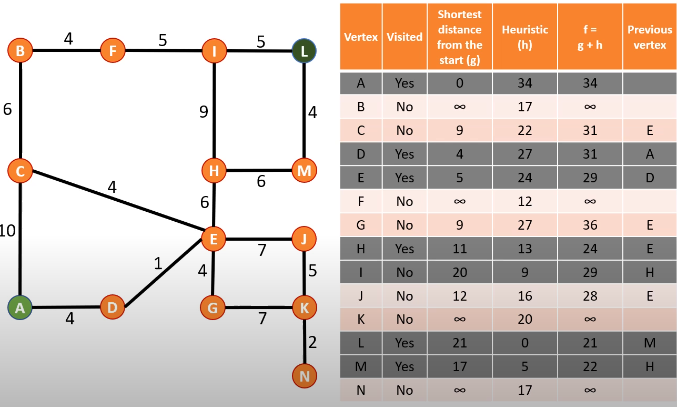2.3.5 path finding algorithms
1/7
There's no tags or description
Looks like no tags are added yet.
Name | Mastery | Learn | Test | Matching | Spaced |
|---|
No study sessions yet.
8 Terms
dijkstras algorithm
finds the shortest path between two nodes in a weighted graph
breadth first search
doesn’t work for edges with a negative weight value
how does dijkstras algorithm work
set the initial distance from the start values for all noes
for each node in the graph
find the node with the shortest distance from the start which has not yet been visited
for each connected node that has not been visited
calculate the distance from the start
if the distance from the start is lower than the recorded distance, set the shortest distance and set the previous node to current node
mark the node as visited

what is A* algorithm
a pathfinding algorithm that finds the shortest path between two nodes on a weighted graph using heuristics
preforms better than dijkstas’s algorithm as it is a best first search meaning not every vertex is considered
A* algorithm features
has two cost functions:
the actual cost between two nodes, the same cost as is measured in Dijkstra’s algorithm
an approximate cost from node x to the final node.
this is a heuristic, and aims to make the shortest path finding process more efficient
the approximate cost might be an estimate of the length between x and the final node, calculated using trigonometry
when calculating the distance between two nodes using the A* algorithm, the approximate cost is added onto the actual cost
this is used to determine which node is visited next
this is meant to reduce the total time taken to find the shortest path
heuristic in A*
estimated cost from the current node to the goal, used to help guide the search more efficiently
uses of A* algorithm
network packet routing
financial modelling for trading assets and goods
solving puzzles like word ladders
A* algorithm example

directed vs undirected graph
directed - arcs/edges can only go in 1 direction
undirected - arcs/edges can go in both directions